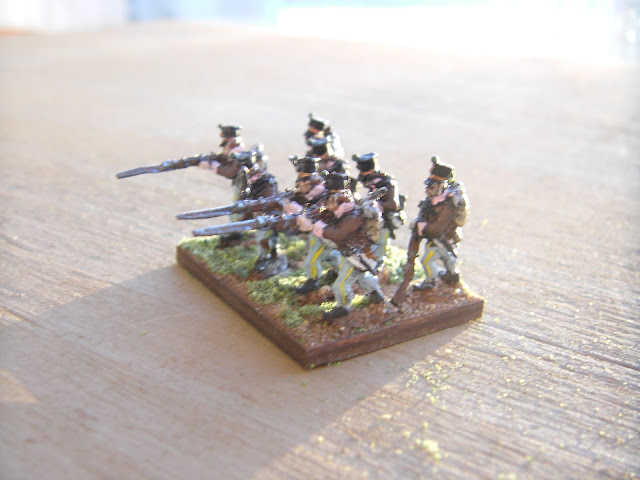Having I been using brushes that are too small?
Today I did a significant amount of painting, very quickly, with a #2 flat, the brush I use to thin my acrylics. Now I'm wondering if I've been using tiny brushes needlessly.
My son Ryan made progress on his Thessalian DBA figures today, hitting the shields. When showing him how to thin the paint, I decided to run the loaded mixing brush across one shield face. It left a smooth, practically completed shield in one stroke. Ryan used the brush to quickly complete the others.
Grenzer Progress
I used the same #2 Flat brush tonight on the pants and shakos for 15mm Austrian Grenzers. Since the figures are very similar, I was able to use a steady brush stroke across the pants legs. I finished all the pants on thirty-two figures in twenty minutes or less. The shakos went quickly, too. I used a #1 round for the boots and bayonet sheaths.
Theses figures won't win any awards, but I found the large brush actually helped me avoid painting all of the way to the edge of the pants, so I have black outlines along the tunic bottom. I also didn't bother touching up every nook and cranny, providing shading. I generally tend to over-paint, so the fast technique worked to my favor.
I tried the same approach on the tunics, switching to brown of course for these 1808 era soldiers. I almost had a disaster because the paint was too thin, and the #2 flat was just too unwieldy. Unlike the pants, I risked marring the face and rifles, which I had painted before. I switched to a #3 round, another larger than usual brush for me, and the tunic painting went quickly.
All told, I finished a good portion of this unit in an hour. I'll use the same approach tomorrow for the backpack and bedroll. This fast progress might dissuade me from buying those 28mm figures for Bolt Action just a bit longer.


































